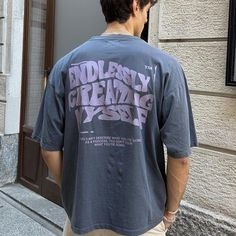The Timeless Appeal of T-Shirt: A Deep Dive into Fashion, Functionality, and Cultural Impact

Introduction
T-shirts are more than just a staple in our wardrobes; they are a symbol of comfort, versatility, and personal expression. From their humble beginnings as undergarments to becoming a central piece in the world of fashion, T-shirts have evolved in remarkable ways. This article explores the history, cultural significance, material innovations, fashion trends, and the sustainability of T-shirts, providing a comprehensive understanding of why this simple piece of clothing remains one of the most beloved garments worldwide.
The History of T-Shirts
The origin of T-shirts can be traced back to the late 19th and early 20th centuries. Initially, they were designed as undergarments worn beneath uniforms and work clothes. The U.S. Navy played a significant role in popularizing T-shirts when they issued them as standard undershirts in the early 1900s. Made from lightweight cotton, these garments provided comfort and ease of movement, which led to their widespread adoption.
The transformation of T-shirts from undergarments to casual wear began in the mid-20th century. Hollywood icons such as Marlon Brando in A Streetcar Named Desire and James Dean in Rebel Without a Cause helped cement the T-shirt’s status as a fashionable outerwear piece. From that moment on, T-shirts became a powerful medium for self-expression and cultural representation.
The Cultural Significance of T-Shirts
T-shirts have played a significant role in shaping cultural and political movements. They serve as canvases for slogans, symbols, and images that reflect societal changes and personal beliefs. For instance, in the 1960s and 1970s, T-shirts became a tool for protest and activism. Messages advocating for civil rights, feminism, and anti-war sentiments were commonly displayed on T-shirts, turning them into wearable statements of resistance and solidarity.
In the 1980s and 1990s, band T-shirts became an essential part of youth culture, symbolizing allegiance to musical genres such as punk, rock, and hip-hop. Simultaneously, branded T-shirts from companies like Nike, Adidas, and Supreme became status symbols, highlighting the intersection of fashion and consumer culture.
Materials and Fabric Innovations
The material composition of T-shirts has evolved significantly over the years. Originally made from 100% cotton, T-shirts are now available in various fabric blends to enhance comfort, durability, and performance.
- Cotton: Classic and breathable, cotton T-shirts remain a popular choice due to their softness and versatility. They are available in different variations such as organic cotton and Pima cotton, which offer superior quality and sustainability.
- Polyester Blends: These blends offer moisture-wicking properties, making them ideal for sportswear and active lifestyles.
- Bamboo Fabric: A relatively new innovation, bamboo fabric T-shirts are eco-friendly, soft, and naturally antibacterial.
- Recycled Materials: Many brands are now producing T-shirts from recycled plastic bottles or old textiles to promote sustainability.
Fashion Trends and Styles
T-shirts have continually adapted to changing fashion trends. Over the years, various styles and designs have emerged, reflecting different aesthetic preferences and cultural influences.
- Graphic Tees: These T-shirts feature prints, logos, and artistic designs, making them a form of self-expression. Band T-shirts, movie-themed shirts, and statement tees are examples of this style.
- Oversized T-Shirts: Popularized by streetwear culture, oversized T-shirts offer a relaxed and contemporary look.
- Fitted T-Shirts: Tailored for a sleek and polished appearance, these T-shirts are commonly worn as part of smart-casual outfits.
- Vintage T-Shirts: Distressed or retro-style T-shirts evoke nostalgia and are highly sought after by collectors and fashion enthusiasts.
The Business of T-Shirts
The T-shirt industry is one of the most profitable sectors in the fashion world. Custom T-shirt printing has allowed businesses, artists, and individuals to create personalized designs that cater to niche markets. The rise of print-on-demand services and e-commerce platforms has made it easier for independent brands to enter the market without requiring large-scale production facilities.
Moreover, collaborations between high-end designers and mainstream brands have elevated the T-shirt’s status, making it a fashionable and sometimes luxury item. Limited-edition T-shirts from brands like Supreme, Off-White, and Balenciaga have been sold for hundreds or even thousands of dollars, demonstrating their high demand and cultural relevance.
Sustainability and Ethical Considerations
As the fashion industry faces growing scrutiny over its environmental impact, the production of T-shirts is being re-evaluated for sustainability and ethical practices. Fast fashion has led to excessive waste and pollution, but many brands are now shifting toward more sustainable alternatives.
- Organic Cotton Production: Brands are prioritizing organic cotton to reduce pesticide use and promote healthier farming practices.
- Fair Trade and Ethical Labor: Companies are being held accountable for fair wages and safe working conditions for garment workers.
- Recycling and Upcycling: Some businesses have launched recycling programs where customers can return old T-shirts in exchange for discounts on new purchases.
- Minimalist Wardrobes: Consumers are becoming more conscious of their purchases, opting for high-quality, long-lasting T-shirts instead of mass-produced, disposable fashion.
The Future of T-Shirts
The future of T-shirts is likely to be shaped by advancements in technology and changing consumer habits. Smart textiles, which incorporate wearable technology, could revolutionize how we interact with our clothing. From temperature-regulating fabrics to LED-embedded designs, T-shirts may soon offer more than just aesthetics and comfort.
Additionally, the rise of AI-driven design and 3D printing may allow for hyper-customization, where consumers can create and order unique T-shirts tailored to their exact specifications.
Conclusion
T-shirts have come a long way from their origins as simple undergarments to becoming an integral part of global fashion and culture. Their versatility, affordability, and ability to convey messages make them a powerful tool for personal expression and social impact. As sustainability and innovation continue to shape the fashion industry, T-shirts will remain a timeless and essential piece in wardrobes around the world.
